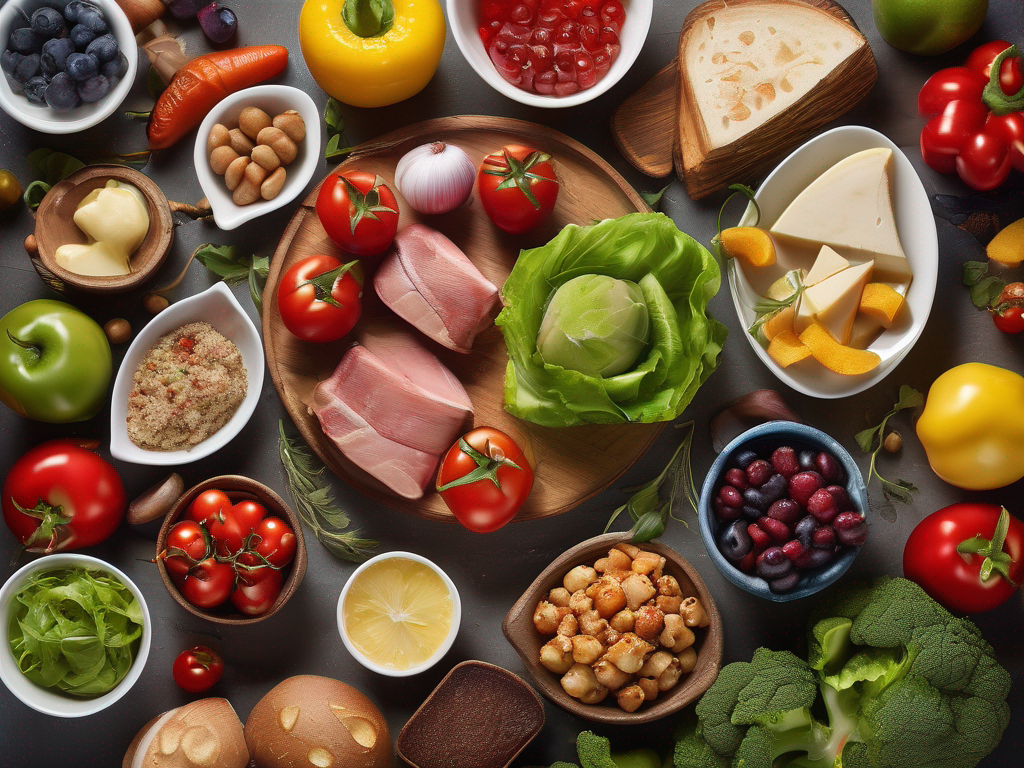
Safely Storing Chicken: Commercially Canned or in Vacuum Pouch Unopened for an Extended Period
Get Your Free Food Safety Cheat Sheet
30 most common foods with instant answers. Print it and stick it on your fridge—completely free!
Safely Storing Chicken: Commercially Canned or in Vacuum Pouch Unopened for an Extended Period
When it comes to storing chicken, whether it's commercially canned or vacuum-sealed in pouches, proper handling and storage practices are essential to ensure food safety and maintain quality. In this comprehensive guide, we will explore the best practices for safely storing chicken for an extended period, whether in a commercial setting or at home.
Understanding the Importance of Proper Storage
Proper storage of chicken, especially in commercial settings, is crucial to prevent foodborne illnesses and maintain the quality of the product. When chicken is not stored correctly, it can lead to contamination by harmful bacteria such as Salmonella and E. coli, which can cause serious health risks when consumed.
Risks of Improper Storage
Improperly stored chicken can lead to:
- Foodborne illnesses
- Spoilage
- Loss of quality and taste
- Wastage of food and resources
Storing Commercially Canned Chicken
Commercially canned chicken is a convenient option for many food establishments, as it is pre-cooked and ready to use. To ensure the safety and quality of canned chicken, follow these storage guidelines:
1. Check the Expiry Date
- Always check the expiry date on the canned chicken before storing it.
- Rotate stock regularly to use the oldest cans first.
2. Store in a Cool, Dry Place
- Keep canned chicken in a cool, dry place away from direct sunlight.
- Avoid storing cans near sources of heat or moisture.
3. Avoid Dents and Damage
- Do not use cans that are dented, leaking, or damaged.
- Damaged cans can compromise the safety and quality of the chicken inside.
4. Use FIFO Method
- Implement the "First In, First Out" (FIFO) method to ensure that older cans are used first.
- This helps prevent spoilage and wastage of canned chicken.
Storing Chicken in Vacuum Pouches
Vacuum-sealed pouches are another popular packaging option for chicken, as they help extend the shelf life of the product. Here are some tips for storing chicken in vacuum pouches:
1. Check for Leaks
- Before storing vacuum-sealed pouches of chicken, check for any leaks or damage to the packaging.
- Discard any pouches that show signs of compromise.
2. Store in the Refrigerator or Freezer
- For extended storage, it is best to store vacuum-sealed chicken pouches in the refrigerator or freezer.
- Follow the recommended storage temperature for chicken to prevent spoilage.
3. Label and Date
- Properly label each vacuum-sealed pouch with the date of packaging.
- This helps track the shelf life of the chicken and ensures it is used within the recommended time frame.
4. Thaw Safely
- When ready to use the vacuum-sealed chicken, thaw it safely in the refrigerator or under cold running water.
- Avoid thawing chicken at room temperature to prevent bacterial growth.
Conclusion
Proper storage of chicken, whether commercially canned or in vacuum pouches, is essential to maintain food safety and quality. By following the guidelines outlined in this guide, you can ensure that your chicken stays fresh, safe, and delicious for an extended period. Remember to check expiry dates, store in appropriate conditions, and follow safe thawing practices to enjoy chicken dishes without compromising on safety.
By implementing these storage practices, you can minimize the risks of foodborne illnesses and wastage, while also maximizing the shelf life and taste of your chicken products. Stay informed, stay safe, and enjoy the benefits of properly stored chicken in your commercial kitchen or home pantry.
Authoritative Food Safety References
These agencies and university labs inform every tip and health precaution we publish.
USDA FoodKeeper – Cold Storage Guidelines
Official refrigerator, freezer, and pantry timelines maintained by the U.S. Department of Agriculture.
Visit USDA FoodKeeperFDA Produce Safety Rule & Grower Guidance
Field-to-fridge handling practices that prevent contamination of fruits, vegetables, and leafy greens.
Visit FDA Produce SafetyCDC Foodborne Illness Prevention Hub
Surveillance-backed guidance on pathogens, symptoms, and steps to reduce foodborne illness risk.
Visit CDC Food SafetyUC Davis Postharvest Technology Center
University research detailing optimal storage atmospheres for produce after harvest.
Visit UC Davis PostharvestPenn State Extension – Home Food Preservation & Safety
Peer-reviewed extension bulletins on safe canning, chilling, and reheating practices.
Visit Penn State ExtensionGet Your Free Food Safety Cheat Sheet
30 most common foods with instant answers. Print it and stick it on your fridge—completely free! Want more? Upgrade to the complete guide with 70+ foods.
Scan your food directly and get instant safety info using our AI-powered camera feature.